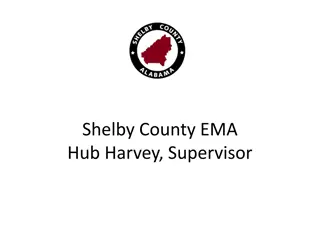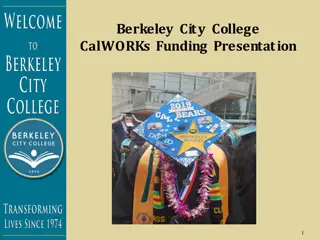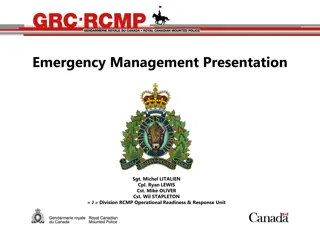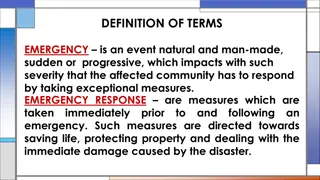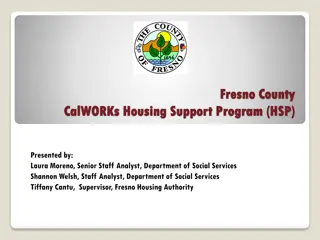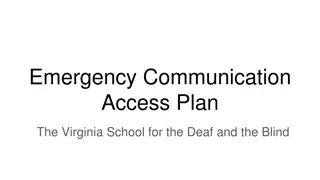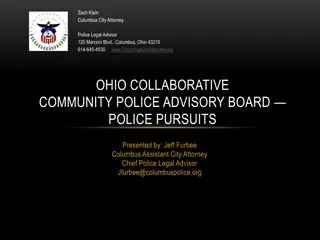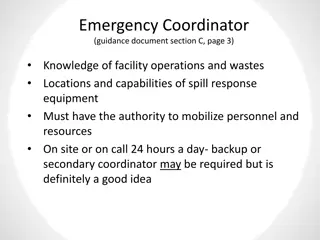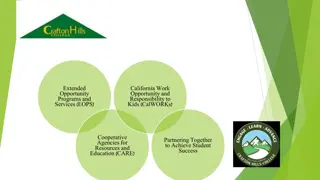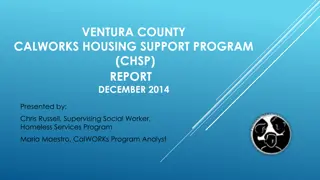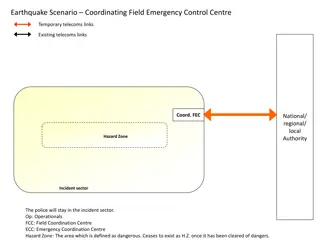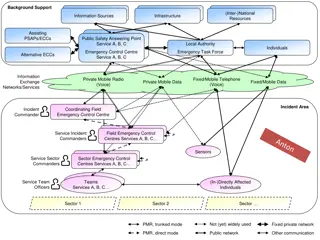Exploring Emergency Response and CalWORKs Integration
This webinar discusses the intersection of Emergency Response and CalWORKs, highlighting opportunities and challenges in coordinating services for families in crisis. It covers prevention strategies, successful innovations by various counties, and the importance of maintaining coordination from the point of intake to follow-up opportunities. The session emphasizes the need for family support services and economic self-sufficiency, showcasing examples like screening tools integration and differential response models in Orange County.
Download Presentation

Please find below an Image/Link to download the presentation.
The content on the website is provided AS IS for your information and personal use only. It may not be sold, licensed, or shared on other websites without obtaining consent from the author. Download presentation by click this link. If you encounter any issues during the download, it is possible that the publisher has removed the file from their server.
E N D
Presentation Transcript
? Welcome to the ER/CalWORKs Webinar! You should have a panel on the right of your screen that shows other attendees and has a box at the bottom to write questions. If you can t see the panel, you can click the orange arrow in the top right corner. Please practice using the question box. If you could visit any country, where would you go? You can type your answer in the question box and hit enter.
? Partnering at the Intersection of Emergency Response & CalWORKS Linkages Shared Learning Webinar #5 May 8, 2012 with Leslie Ann Hay of Hay Consulting
? Agenda Emergency Response & CalWORKs An overview of the opportunities and challenges for coordinating services at the point of intake Linkages as a Prevention Strategy Successful innovations presented by several counties Maintaining Coordination Focusing on the handoff from ER to FM or FR Follow-up Opportunities Plus next steps
Emergency Response and CalWORKs () ? Point of Crisis Emergency Response CalWORKs Need Need for family support service? for economic self-sufficiency? Agree to ongoing service coordination? Prevention Prevention Maintaining Coordination
PREVENTION: ER Point of Entry ? Emergency Response CalWORKs Need for economic self-sufficiency? Screening Tool Integrate with DR
PREVENTION: ER Point of Entry ? Emergency Response CalWORKs Need for economic self-sufficiency? Screening Tool Integrate with DR
? Orange County: Linkages & Differential Response Differential Response offers an alternative response (Path I, II, and III) to allegations of abuse based on the Risk level of the family. Orange County s DR Project is a Community and Agency response based on the tenet that child abuse is both an Agency and a community concern.
Differential Response Path 2 The DR Units have full time SSWs that investigate child abuse reports and partner with other agencies ( Cal WORKS and FRC s) to provide services. Orange County s DR Model incorporates CFS workers co- located with CalWORKS staff in each region of the county to better collaborate and consult on mutual client cases. (DR SSW s partner and do joint home visit with CalWORKS and FRC staff). All DR clients are assessed for eligibility to CalWORKs. DR SSW collaborate with CalWORKS case workers to ensure services are provided. DR SSW s also participate in meetings related to services for the families DR families tend to score at the Moderate Risk level using Structured Decision Making (SDM).
Outcome Measurements The DR Practice Model seeks to reduce recurrence of maltreatment by engaging clients early on in the investigative process and linking families directly to services in the communities in which they live. Recurrence of Maltreatment is measured by what percentage of families with a substantiated referral did not receive a subsequent substantiated referral within 6 months. The DR Teamed response is yielding a 70% client engagement rate. In 2011 DR has worked 2802 referrals. The DR team model data shows that families do return to community agencies for services.
PREVENTION: CalWORKs Point of Entry ? Emergency Response CalWORKs Need for family support service? AGREEMENT Provide voluntary family support services
? Orange County: Family Support Prevention Services CalWORKs intake staff trained to engage families in prevention services. A slideshow about the strategy is housed on the Linkages Toolkit
? Orange County: CalWORKs SDM Prevention Services Goals: Identify family risk factors that indicate the possibility of future child maltreatment Determine services to be provided to prevent child maltreatment Increase the ability of the family to engage in employment services and achieve self- sufficiency
? CalWORKs SDM Objectives Identify both family strengths and needs Offer voluntary Prevention Services to families at risk using reliable & valid assessment tools Target services to families most at risk and develop case plans using MDT Prevent the family from future referrals to CPS Increase the family s engagement in employment services & WtW participation
? CalWORKs SDM Outcomes Families with prior Child Abuse Reports (CAR) & scored high risk on SDM were most likely to volunteer for prevention services (PVR). Families with prior CAR who received PVR more likely to not have subsequent CAR. At follow-up, half of families who participated had closed WtW cases, remainder were in DASU, exempt or sanctioned.
? CalWORKs SDM Outcomes (cont.) From 09 11, family agreement to be screened tripled (7% 24%); up to 40% in 2012 Families who were offered prevention services typically accepted 85% of families moved down at least one risk level: from very high to high, from high to moderate, or from moderate to low
? Q & A Questions for Orange County? What other prevention innovations are you putting into place for either point of entry?
MAINTAINING COORDINATION ? Emergency Response CalWORKs Agree to ongoing service coordination? Coordinate services for the duration of the mutual case
? County Examples: Sharing best practices Los Angeles automation & centralization helps with maintaining coordination Tulare joining forces to establish a working partnership increases investment in maintaining coordination over time Questions?
? Other experiences to share? About ensuring continuity of information & knowledge about the case? On tracking & communicating worker assignment changes? Regarding centralizing documentation? Other issues?
? Wrapping Up or Continuing the Conversation There s one more Webinar about ER/CalWORKs in October. Would you like to participate in an ER/CalWORKs interest group? Use raise hand feature now or email leslieann@hayconsulting.org by Monday, May 14. What frequency/structure works best for those who are interested? If you have best practices to include in the Linkages Toolkit, submit them to danna.fabella@cfpic.org
? Follow Up: we ll email with Copy of this PowerPoint Updated Linkages Coordinators Directory Webinar Schedule 2012 Next Webinars June 5: Family Reunification/CalWORKS Cathy Murnighan will send registration link Questions? danna.fabella@cfpic.org



